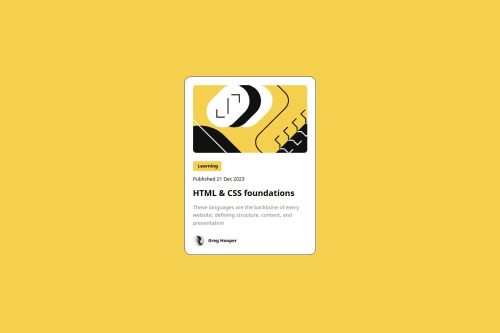Submitted over 1 year agoA solution to the Blog preview card challenge
blog preview card
tailwind-css
@Eng-Abdelrhman100

Solution retrospective
What challenges did you encounter, and how did you overcome them?
making the shadow appear on hover
What specific areas of your project would you like help with?please check and tell me where can i improve and thank you
Code
Loading...
Please log in to post a comment
Log in with GitHubCommunity feedback
No feedback yet. Be the first to give feedback on Abdelrhman Yasser Ali's solution.
Join our Discord community
Join thousands of Frontend Mentor community members taking the challenges, sharing resources, helping each other, and chatting about all things front-end!
Join our Discord